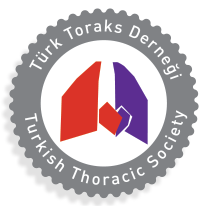Abstract
Introduction:
Primary pulmonary lymphoma (PPL) is rare, and diffuse large B-cell lymphoma (DLBCL), is the second most type of PPL. The biological features, clinical presentation, prognosis markers, and treatment of PPL-DLBCL have not been well defined.
Case Presentation:
A 47-year-male has presented with dyspnea for the past two months. No other symptoms such as fever, cough, chest pain, or weight loss were present. The patient was without smoking or alcohol abuse history. He’s been a Farmer for nearly 25 years. He had no family history of cancer. Upon physical examination, the patient was well nourished. There was no evidence of lymphadenopathy, skin lesions, dementia, or focal neurologic deficit. Throughout inspiration, he had crackles bilaterally in the lower lung fields. Routine blood tests, liver and renal function assays, and the erythrocyte sedimentation rate were all within normal ranges, although the level of serum lactate dehydrogenase (LDH) was elevated at 229 U/L (normal range 135–220 U/L). The patient carried out a chest CT examination in the local hospital that showed the diffuse consolidation with an air-bronchogram. After 2 weeks of anti-infection treatment with levofloxacin; however, a chest X-ray examination found that the size of the lesion in her lower lung fields did not shrink. Computed tomography (CT)-guided fine-needle aspiration cytology was performed for definitive diagnosis. Transbronchial lung biopsy showing diffuse large B-cell lymphoma. Positron emission tomography-computed tomography (PET-CT) scans performed after the lung biopsy showed increased metabolic activity in the lungs, but no abnormal accumulation of 18F-FDG in either the mediastinum or the hilus. Primary pulmonary non-Hodgkin’s lymphoma (NHL) is very rare and accounts 0.4% of all lymphomas. Diffuse large B cell lymphoma occurs only in 10% cases of primary pulmonary NHL. Most of the patients with primary pulmonary NHL have no clinical symptoms. In symptomatic cases, common presentation of primary pulmonary NHL includes systemic symptoms or respiratory symptoms such as dyspnoea. The treatment of primary pulmonary lymphomas is not clearly established.
Conclusion:
Primary pulmonary lymphoma, a rare and unique form of lymphoma, is difficult to diagnose because it has nonspecific clinical and radiological features.



